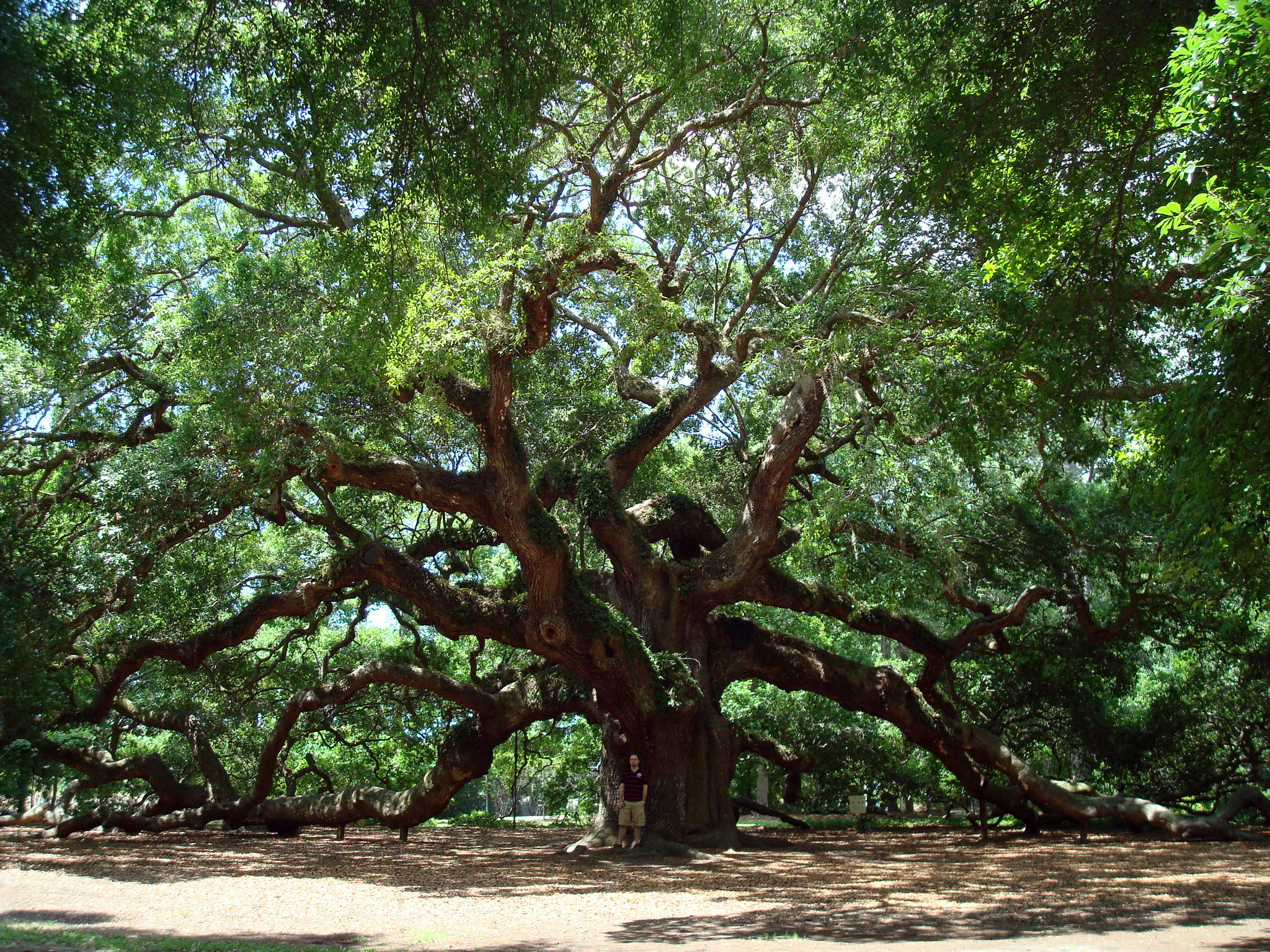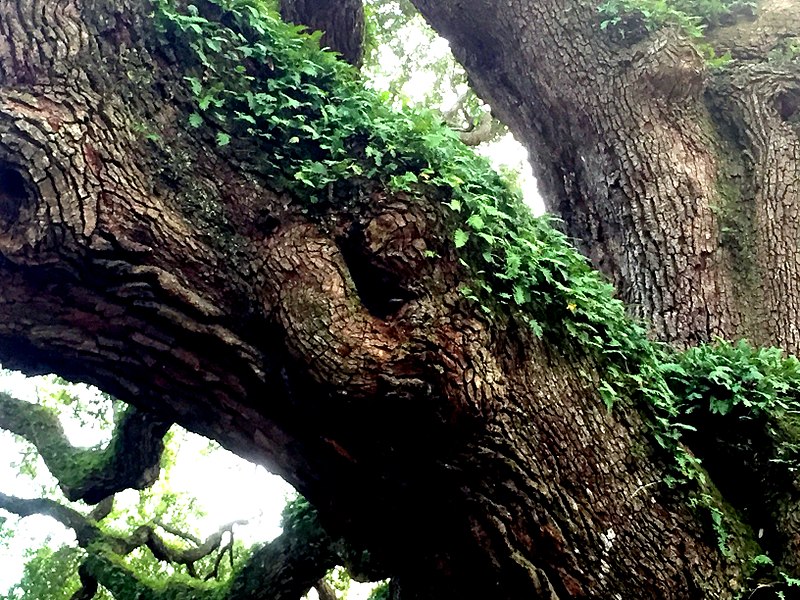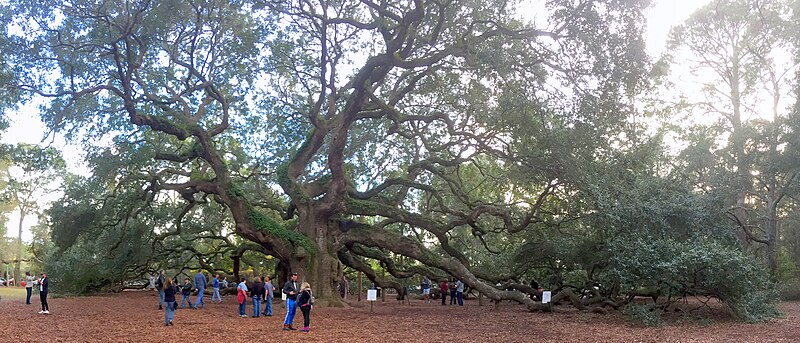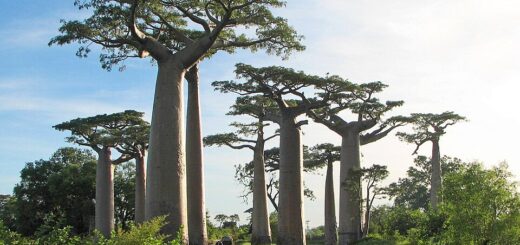Angel Oak Tree – A Living Monument to Nature’s Endurance

Nestled in the heart of Angel Oak Park in Charleston, South Carolina, stands one of the most awe-inspiring living monuments in the United States: the Angel Oak Tree. This ancient Southern live oak (Quercus virginiana) is not just a tree, but a symbol of endurance, resilience, and the deep history that lies within nature’s oldest living beings. Standing at a towering about 65 feet, with a canopy that provides 17,000 square feet of shade, the Angel Oak is more than just a giant in the forest, it is a testament to the power and beauty of the natural world.
A Tree of Incredible Size
The Angel Oak is one of the largest and oldest Southern live oaks in the world, with a height of about 65 feet, a circumference of 28 feet, and branches that stretch up to 89 feet in length. The sheer size of the tree is awe-inspiring, but what truly sets the Angel Oak apart is its age. It is estimated to be between 400 and 500 years old, making it older than the United States itself. To put this into perspective, this oak tree has stood through centuries of history, from the era of early Native American tribes in the region to the American Revolution and beyond.
Its wide, sprawling branches seem to defy gravity, gracefully arching and twisting toward the sky. The tree’s branches are so thick and expansive that they appear to support entire ecosystems of plants and mosses, creating an ethereal beauty.
A Rich History
The history of the Angel Oak is as captivating as the tree itself. The name “Angel Oak” is believed to have been inspired by local legends. Some say that the tree was named for the spirits of angels that are said to appear around it at night, offering a sense of comfort and peace to those who come into its presence. Others suggest that it was named after the “angelic” appearance of its branches, which can seem almost otherworldly when illuminated by the soft light of the setting sun.
The tree also holds deep significance for the Gullah Geechee people, descendants of African slaves who lived along the southeastern coast. The Angel Oak is believed to have witnessed significant cultural and spiritual events in the Gullah community, including rituals, celebrations, and even slavery-era gatherings. The deep roots of the tree metaphorically reflect the strength and resilience of these people, who faced hardship and oppression but continued to thrive.
In addition to its cultural importance, the tree has had a significant role in local preservation efforts. In the 1990s, the city of Charleston and other local groups worked together to protect the Angel Oak from commercial development and harm. Today, the tree stands as a symbol of conservation, demonstrating the importance of preserving natural wonders for future generations.

ferns and other greenery grow along the Angel Oak’s massive branches. © Creative Commons | Author: MadeYourReadThis
A Living Legend of Conservation
The Angel Oak Tree is not just a remarkable natural wonder — it is also a beacon for conservation efforts. Over the years, this ancient tree has weathered many storms, both literal and metaphorical. In the face of hurricanes, droughts, and other environmental challenges, the tree has stood strong. But even the Angel Oak is vulnerable to the pressures of time and climate change.
Preservation efforts are ongoing to ensure that the tree continues to thrive. Local organizations and park officials have worked tirelessly to protect the tree, implementing measures to prevent harm from both natural and human sources. Visitors to the park are encouraged to be respectful of the tree and its surroundings, ensuring that this natural monument can continue to inspire awe for generations to come.
The park around the Angel Oak has been carefully designed to give visitors the chance to admire the tree while also protecting its roots and delicate ecosystem. Interpretive signage and educational programs help bring awareness to the ecological and cultural significance of the tree, encouraging a deeper connection with nature.
A Symbol of Strength and Resilience
The Angel Oak Tree is a living example of strength, endurance, and resilience. It has stood through centuries of change, surviving the many challenges that nature and time throw its way. For those who visit, it offers not just a glimpse into the past, but a profound reminder of the power of nature to endure and thrive.
Whether you’re standing under its towering branches or simply admiring its graceful form from a distance, the Angel Oak reminds us of the deep interconnectedness of all living things. It stands as a symbol of the strength that comes from resilience and the beauty that can be found in nature’s most enduring wonders.

Angel Oak on Johns Island, South Carolina is a public attraction. © Creative Commons | Author: MadeYourReadThis
Plan Your Visit
If you’re planning to visit Charleston, be sure to make a trip to see the Angel Oak. The park is open daily, and entrance is free, though donations are encouraged to help with ongoing preservation efforts. The park offers guided tours, allowing visitors to learn more about the tree’s history, significance, and the efforts being made to ensure its continued survival. It’s a chance to witness firsthand the incredible beauty and significance of one of nature’s most remarkable trees.
In a world where we often take nature for granted, the Angel Oak Tree is a living reminder of the importance of conservation, respect for the environment, and the awe-inspiring power of the natural world. Standing before this ancient tree, it’s impossible not to feel a deep sense of wonder and appreciation for the history and resilience it represents.
References:
[The Angel Oak Park] https://www.charleston-sc.gov/153/Angel-Oak
[Wikipedia] https://en.wikipedia.org/wiki/Angel_Oak










